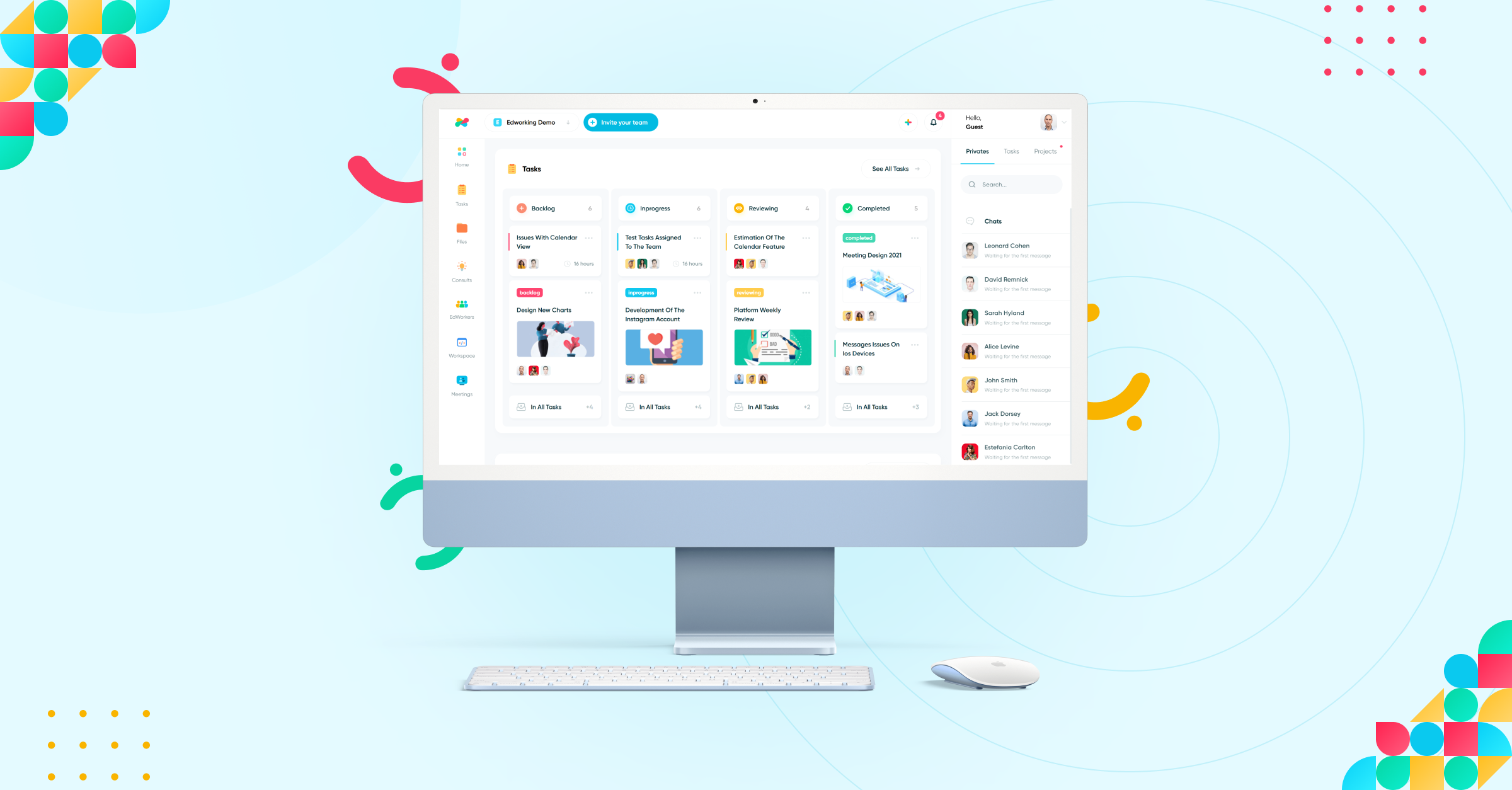Imagine walking into a bustling coffee shop early in the morning. You're there to grab your usual, a steaming cup of espresso. To the barista, you're a customer – someone who makes a straightforward transaction, relishing in the simplicity of a well-crafted coffee. Now, picture a different scenario where you're working with a personal fitness trainer. In this case, you're not just purchasing a service; you're building a relationship based on personalized goals and trust. Here, you're a client.
This everyday juxtaposition between being a client and a customer is more than just semantics. It's a fundamental concept that shapes how businesses interact with the people they serve. Understanding this distinction is not just beneficial; it's crucial in the realm of business. It influences marketing strategies, shapes customer service approaches, and even dictates the overall approach of a business.
Are you the person grabbing a quick coffee, or the one investing time in a personalized fitness regime? This article dives deep into the nuances of being a client versus a customer, exploring why this distinction is vital for anyone looking to thrive in the modern business landscape.
 Understanding the Basics
Understanding the Basics

Definition of a Client
When we talk about a client, we're referring to an individual or a group that engages in a professional relationship with a service provider. This relationship is typically ongoing and is built on the foundation of trust, consultation, and tailored services. For instance, think of a lawyer and their client. The lawyer provides specialized legal services, perhaps over multiple cases or an extended period, with a focus on meeting the client's specific, evolving needs. Another classic example is an advertising agency developing a long-term marketing strategy for a business. Here, the agency delves deep into the company's brand, market position, and objectives to create customized solutions. The key element in these client relationships is the depth of engagement and the level of personalized service.
Definition of a Customer
In contrast, a customer is someone who purchases goods or services, but the interaction is generally more transactional and short-term. This term is often used in retail or standard business-to-consumer (B2C) transactions. For example, when you visit a grocery store and buy ingredients for dinner, you are a customer. The exchange is straightforward – you pay for products, and the store provides them. There's little personalization or ongoing relationship. Similarly, when you order a book from an online store, you're a customer engaging in a one-time transaction. The focus here is on the product rather than an ongoing service or a relationship.
Understanding these fundamental differences sets the stage for deeper insights into how businesses approach their market and tailor their strategies to suit either clients or customers.
 The Core Differences
The Core Differences
Relationship Duration

Clients: Long-term Engagement
When we delve into the dynamics of a client relationship, the emphasis often lies on long-term engagement. This is a journey, not just a simple transaction. Take, for example, an architect and their client. The process of designing and constructing a building takes months or even years, during which the architect and client collaborate closely. The relationship is nurtured over time, adapting and growing to meet the evolving needs and circumstances of the client. This enduring partnership is at the heart of what differentiates a client from a customer.
Customers: Transactional Interaction
Conversely, the customer's journey is characterized by transactional interactions. These are typically short-lived, focusing on the immediate exchange of goods or services for payment. For instance, buying a coffee at your local café is a quintessential customer interaction. You choose a product, make a purchase, and the transaction is complete. There's no expectation of a prolonged engagement beyond this point. This brevity and simplicity are what typically define the customer experience.
Depth of Interaction
Clients: In-depth Involvement
In a client-based relationship, the depth of interaction is substantial. The service provider often delves into the client's world, understanding their needs, challenges, and objectives to offer tailored advice or solutions. Consider a financial advisor managing a client's investment portfolio. They must understand the client's financial goals, risk tolerance, and long-term aspirations to provide effective guidance. This level of involvement goes far beyond a mere transaction; it's a comprehensive engagement.
Customers: Surface-level Exchange
In contrast, the interaction with a customer usually involves minimal depth. It's more about the immediate exchange of value – the purchase of a product or a straightforward service. For instance, when you buy a sandwich at a deli, the exchange is limited to choosing your order, paying for it, and receiving your food. The deli doesn't need to understand your long-term dietary goals or preferences beyond that single transaction. This surface-level exchange is swift and efficient, focusing primarily on the product or basic service being sold.
Customization of Service

Clients: Personalized Solutions
In client relationships, there's a significant emphasis on personalized solutions. Service providers tailor their offerings to fit the unique requirements and preferences of each client. For instance, consider a business consultant working with a small company. The consultant doesn't just offer generic advice; they delve into the specific challenges and goals of that company, crafting customized strategies and solutions. This personalization can involve adapting services over time, continually aligning with the client's evolving needs.
Customers: Standardized Offerings
On the flip side, when dealing with customers, businesses typically provide standardized offerings. The interaction is more about delivering a consistent product or service to a broad audience. Fast-food restaurants are a prime example of this. They offer a set menu of items, designed to meet the general preferences of their customer base. There's little to no customization involved; customers choose from what's available, and the transaction is usually the same for everyone. This approach maximizes efficiency and simplicity but lacks the individualized attention seen in client relationships.
 Real-World Examples and Scenarios
Real-World Examples and Scenarios
Client-Based Business Examples
To better understand how businesses operate with a client-focused approach, let's look at some examples across various industries:
- Legal Services: Law firms typically have clients, not customers. A law firm might represent a client in multiple legal matters over several years, offering tailored legal advice and representation based on the client's unique circumstances.
- Accounting and Financial Planning: Accountants and financial planners work closely with their clients, providing personalized financial advice, tax planning, and wealth management services tailored to each client's financial situation and long-term goals.
- Architecture and Design Firms: These firms work on projects that often span months or years, such as designing a new home or office building. They provide bespoke solutions that consider the client's vision, budget, and functional requirements.
- Advertising Agencies: They develop comprehensive advertising and marketing campaigns for their clients. This involves understanding the client's brand identity, target market, and strategic objectives to create customized marketing solutions.
- IT and Consulting Services: Firms in this sector offer specialized services like software development, technology consulting, and system integration tailored to the specific needs of their clients.

Customer-Based Business Examples
Now, let's explore examples where businesses primarily interact with customers:
- Retail Stores: Whether it's a clothing store, a supermarket, or an electronics retailer, these businesses sell products to customers in a standard, transactional manner.
- Fast Food Restaurants: These establishments offer a quick service with a standardized menu. Customers make a simple transaction to purchase food items without expecting tailored services.
- E-commerce Platforms: Online marketplaces like Amazon or eBay cater to a broad customer base, selling a wide range of products through a standard, transactional process.
- Movie Theaters: They provide a standard service – screening films. Customers purchase tickets, perhaps some concessions, and enjoy the movie, with minimal personalized interaction.
- Gas Stations: These are classic examples of customer-based transactions. Customers stop to refuel their vehicles, make a payment, and continue on their journey with no expectation of a long-term relationship or personalized service.

 Why the Distinction Matters in Business
Why the Distinction Matters in Business
Understanding whether you're dealing with clients or customers is not just a matter of terminology—it's a strategic decision that impacts your business at multiple levels. Let's explore how this distinction influences various aspects of business operations.
Marketing Strategies

Differences in Approach
In marketing to clients, the focus is on building relationships and trust. Marketing strategies often involve personalized communication, such as tailored emails, targeted social media campaigns, and even face-to-face meetings. For example, a real estate agency might use personalized email campaigns to stay in touch with past and potential clients, offering market insights tailored to their interests.
In contrast, when marketing to customers, the emphasis is on reaching a broader audience with a more generalized message. The strategies are often designed to maximize reach and appeal to the general needs and desires of a large group. Think of a supermarket chain using mass media advertising to promote a sale. The message is not personalized but is designed to attract a large number of customers.
Sales Tactics
Variation in Methods
Sales tactics for clients are often about relationship-building and understanding individual needs. This might involve in-depth discussions, personalized presentations, and demonstrations tailored to the specific interests of the client. For instance, a software company might conduct detailed needs assessments before presenting a customized software solution to a potential client.
For customers, sales tactics are typically more straightforward and less personalized. They often focus on efficient transactions and may involve methods like point-of-sale promotions, straightforward pricing strategies, and easy checkout processes. An example is a bookstore offering a discount at the checkout to encourage immediate purchases.
Customer/Client Service and Support

Contrasting Strategies for Each Group
Customer service for clients usually involves a higher level of personalization and ongoing support. It might include dedicated account managers, personalized support services, and regular check-ins to ensure the
client's needs are being met. For example, in a wealth management firm, clients might have direct access to their financial advisors who provide customized advice and periodic reviews of their investment portfolios.
On the other hand, customer service for customers tends to be more standardized and transactional. Support services are often designed to handle large volumes of inquiries efficiently, focusing on resolving issues quickly. This could be seen in call centers of large retail companies where customer service representatives handle a wide range of queries and issues, following standardized protocols to ensure consistency and efficiency.
 The Main Difference Between Clients and Customers in Various Fields
The Main Difference Between Clients and Customers in Various Fields
The distinction between clients and customers takes on different nuances across various industries. Let’s explore how this plays out in the retail industry, service-oriented businesses, and the tech industry.
In the Retail Industry
In the retail sector, the primary interactions are usually with customers. The main difference here is the focus on transactional relationships. Customers in retail are those who purchase goods for their personal use. They are typically involved in one-time transactions or infrequent purchases. Retailers, therefore, focus on strategies like attractive pricing, product variety, and effective merchandising to appeal to a broader customer base. For example, a clothing store in a shopping mall operates primarily on a customer basis, aiming to attract a high volume of foot traffic with seasonal promotions and a diverse range of apparel.
In Service-Oriented Businesses
Service-oriented businesses, on the other hand, often deal more with clients than customers. The defining characteristic in these businesses is the ongoing relationship focused on providing tailored services. For instance, consider a consulting firm or a legal practice. These businesses work closely with clients over longer periods, often requiring a deep understanding of their clients' unique needs and challenges to provide customized solutions. In these fields, trust, expertise, and personalized service are paramount. The success of these businesses hinges not just on the quality of the service offered but also on the strength of the relationships they build with their clients.
In the Tech Industry
The tech industry presents a unique blend of client and customer dynamics. On one end, you have companies that offer consumer tech products, like smartphones or software for personal use, where the interactions are largely customer-based. These companies focus on mass-market strategies, emphasizing features, usability, and price to appeal to a broad customer base.
On the other end, there are tech businesses that provide specialized services or products to other businesses (B2B), like custom software development or enterprise solutions. Here, the relationships are more client-oriented, involving longer-term engagements and a high degree of customization. For example, a company that develops custom CRM (Customer Relationship Management) systems for businesses is primarily dealing with clients. These clients require solutions tailored to their specific organizational needs, requiring a deep understanding of their business processes, challenges, and goals.
In essence, while the retail industry predominantly targets customers with a focus on transactions and immediate sales, service-oriented businesses and the tech industry often balance between client and customer dynamics. The tech industry, in particular, shows versatility in catering to both groups, requiring businesses within this sector to be adept at shifting their approach based on the nature of their offering and the target market. This flexibility and understanding of the client-customer spectrum are crucial for success in these diverse fields.
 The Client/Customer Dynamic in the Digital Age
The Client/Customer Dynamic in the Digital Age
The advent of digital technology has significantly reshaped the dynamics between businesses and their clients or customers. This shift is evident in how relationships are managed, services are delivered, and interactions are personalized.

Impact of Technology on Relationships
Technology has revolutionized the way businesses interact with both clients and customers. In the case of clients, technology enables more personalized, efficient, and data-driven services. For example, CRM (Customer Relationship Management) systems allow businesses to track client interactions, preferences, and history, enabling a more tailored approach to service. Additionally, digital tools like video conferencing and project management software have made it easier to maintain close relationships with clients, regardless of physical location.
For customers, technology has facilitated a more convenient, fast, and seamless purchasing experience. E-commerce platforms, mobile apps, and social media channels have transformed the shopping experience, making it possible to browse, compare, and purchase products with a few clicks or taps. This digital shift has not only increased convenience for customers but also opened up new avenues for businesses to reach and engage with a broader audience.
Online Business Models Catering to Both
The digital landscape has given rise to online business models that effectively cater to both clients and customers. Platforms like Amazon serve as a quintessential example, offering a customer-focused shopping experience for a vast array of products, while also providing a marketplace for businesses (clients) to sell their goods, complete with tailored services like Amazon FBA (Fulfillment by Amazon).
Similarly, SaaS (Software as a Service) companies operate on a model that serves both individual customers with off-the-shelf solutions and business clients with customized software options and integrations. These dual approaches allow such companies to diversify their revenue streams and cater to varying needs across the client-customer spectrum.

The Future of Client and Customer Interactions
Looking ahead, the future of client and customer interactions in the digital age seems poised for further evolution. Advancements in AI and machine learning are expected to offer even more personalized experiences, especially for customers, through predictive analytics and tailored recommendations. For clients, the growing trend towards digital transformation and remote collaboration tools will likely deepen the level of engagement and customization possible in service delivery.
Moreover, the increasing importance of data privacy and security will play a pivotal role in shaping these interactions. As businesses collect more data to enhance their client and customer experiences, they will also need to navigate the complexities of data protection and ethical considerations.
 Tying It to Edworking
Tying It to Edworking

As we navigate the intricacies of client and customer relationships in the digital age, tools like Edworking emerge as significant enablers in managing and enhancing these connections. Edworking, a comprehensive platform designed for remote work and collaboration, offers an array of features that cater to the needs of businesses dealing with both clients and customers.
At its core, Edworking provides a suite of tools that facilitate communication, project management, and team collaboration. For businesses focused on client relationships, Edworking's project management tools can be invaluable. They enable seamless collaboration on projects, allowing for real-time updates, file sharing, and task tracking. This level of collaboration ensures that clients are kept in the loop and can actively engage in the project's progression, fostering transparency and trust.
Furthermore, Edworking's communication tools, such as instant messaging and video conferencing, allow for quick and effective communication. For businesses that deal with customers, these tools can be used to provide customer support and engagement, ensuring that customer queries are addressed promptly and efficiently.
Edworking also shines in its capacity to integrate with other tools. This integration capability means that businesses can connect the platform with other customer relationship management (CRM) or sales tools they might be using. This feature is particularly beneficial for aligning sales and marketing strategies, whether the focus is on clients or customers.
In essence, Edworking provides a flexible and comprehensive platform that supports the varied needs of businesses, whether they are cultivating deep, long-term relationships with clients or aiming to efficiently manage a broad base of customer interactions. By leveraging such a platform, businesses can enhance their operational efficiency, improve communication, and provide better services, ultimately contributing to stronger client and customer relationships.
For those interested in testing their typing skills or learning more about their communication style, Edworking offers tools like the Paragraph Typing Test and the Communication Style Quiz, which can be beneficial for personal development and effective client-c
ustomer communication. Additionally, for managers looking to assess their aptitude in handling team dynamics and project management, the Management Aptitude Test available on Edworking can provide insightful feedback.
In conclusion, Edworking stands as a versatile and essential tool in the modern digital landscape, where the lines between client and customer relationships are increasingly intertwined and where effective communication and management tools can make a significant difference in business success.
 Conclusion
Conclusion
In the journey through the nuanced landscapes of client and customer relationships, we've uncovered several key distinctions that are pivotal in shaping business strategies. The primary takeaway is the understanding that clients and customers, while often used interchangeably, signify different types of relationships and interactions within a business context.
Clients represent long-term, in-depth relationships focused on personalized services and solutions, as seen in industries like legal services, consulting, and technology. These relationships are characterized by a deeper level of engagement and customization to meet specific needs and goals. In contrast, customers are associated with more transactional interactions, typical in retail or fast-food industries, where the emphasis is on standardized products and services catering to a broader audience.
The impact of these distinctions extends to various facets of business operations, influencing marketing strategies, sales tactics, and customer service approaches. Marketing to clients often involves a personalized, relationship-building approach, while marketing to customers is about mass appeal and efficiency. Similarly, sales tactics and customer service differ significantly, with a more individualized approach for clients and a standardized, high-volume approach for customers.
The digital age has further nuanced these relationships, with technology playing a pivotal role in enhancing and personalizing customer interactions and enabling deeper collaboration with clients. Platforms like Edworking exemplify how digital tools can support both client and customer relationships, offering flexible, integrated solutions for communication, project management, and collaboration.
Understanding the differences between clients and customers is not just academic; it's a strategic imperative. Businesses that recognize and adeptly navigate these differences are better positioned to develop targeted strategies, build stronger relationships, and achieve sustainable success. Whether your focus is on nurturing long-term client relationships or efficiently serving a broad customer base, the key lies in tailoring your approach to meet the specific needs and expectations of each group. In the dynamic and ever-evolving business landscape, this understanding is more than just beneficial—it's essential.





